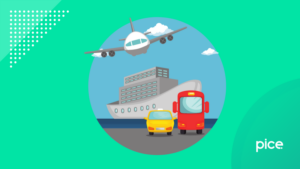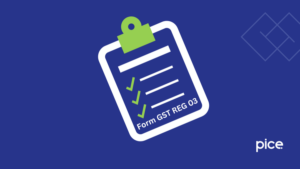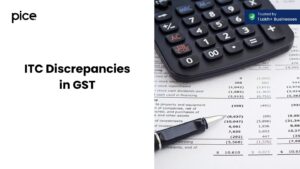Impact of GST on Cosmetics
- 20 Jun 25
- 9 mins

Impact of GST on Cosmetics
- Impact of GST on Cosmetics, Beauty and Wellness Industry
- Overview of GST for Beauty Parlors, Salons and Spas
- Input Tax Credit for Beauty and Wellness Services
- Filling GST Returns: Procedures and Deadlines
- Common Compliance Issues in the Beauty and Wellness Sector
- Best Practices for Ensuring GST Compliance
- Conclusion
Key Takeaways
- GST replaced multiple indirect taxes, simplifying compliance for beauty and wellness businesses.
- Cosmetics and beauty services are taxed at high GST rates of 18–28%, raising consumer costs.
- Small salons below ₹20 lakh turnover are exempt, easing the burden for low-revenue businesses.
- Input Tax Credit (ITC) helps businesses reduce tax liability on eligible purchases and expenses.
- Proper invoicing, documentation, and timely GST return filing are crucial to avoid penalties.
The introduction of the Goods and Services Tax (GST) has significantly changed the cosmetics sector in India. Prior to GST implementation, it was highly complicated and ultimately expensive for consumers to purchase cosmetics because of the burden of various tax structures, including excise duty, VAT and service tax.
Even though cosmetics are now taxed under the GST scheme, they are taxed as luxuries and have a GST rate of 18% or 28%.
Continue reading this blog to gain detailed insights into the impact of GST on cosmetics and other key details.
Impact of GST on Cosmetics, Beauty and Wellness Industry

With the introduction of GST in India, one of the largest economies in the world has been severely impacted, including the beauty and wellness industry. The GST replaced a multitude of indirect taxes, making tax compliance more straightforward for businesses, but led to higher overall costs for consumers because the GST rates on beauty services, cosmetics and wellness treatment can range from 5% to 28%.
Small salon industry and spas that generate lower revenues are not subjected to the tax, which is a clear benefit to those entrepreneurs, but higher revenue salons and spas, unfortunately, undertake the higher tax costs.
While it seems that the overall impact of GST has led to higher service costs in the beauty, cosmetic or plastic surgery service and wellness industry, GST has made tax compliance easier as well as improved transparency in the sector.
Overview of GST for Beauty Parlors, Salons and Spas
For beauty parlours, salons and spas, the GST regime has replaced multiple old taxes with a single system. Small businesses should check to see if they can take advantage of the Composition Scheme to pay a fixed tax rate. GST generally makes billing easier, greater transparency and more efficient tax compliance. However, it can often create additional costs for customers.
GST Rates for Services
The GST rates relating to beauty and wellness services are usually set at 18%. This rate applies to the majority of services provided by salons, beauty parlours and spas that include facials, haircuts, manicures, pedicures and other beauty treatments.
The table below lists the service types and details about GST rate of those services:
| SAC Code | Type of Service | GST Rates |
| 999721 | Hairdressing and barbers services | 18% |
| 999722 | Cosmetic treatment (including cosmetic/plastic surgery), manicuring and pedicuring services | 18% |
| 999729 | Other beauty treatment services | 18% |
Input Tax Credit for Beauty and Wellness Services
Input Tax Credit (ITC) enables beauty and wellness companies to lower their GST liability by claiming a credit for taxes paid on business purchases and expenses. Beauty salons and spas can claim ITC for their beauty product purchases, equipment purchases and rent paid for their locations. Credit cannot be claimed for services used for personal consumption. Invoices and purchases must comply with GST regulations to claim ITC.
The ITC benefits businesses by lowering their overall tax liability and improving profitability. GST increases costs on services, but the ITC lowers the amount paid for expenses, which makes managing taxes easier for beauty and wellness service providers registered under GST.
Mandatory GST Registration Criteria
Beauty service providers must register for GST if their annual turnover is more than ₹20 Lakh (₹10 Lakh is applicable for special category states). Businesses offering services in more than one state must register irrespective of the turnover amount. Businesses that have beauty products in addition to providing services will need to comply with GST rules for standard goods and services.
Businesses below the limit can register and apply for Input Tax Credit (ITC), voluntarily. After registration, businesses must charge GST on their bills, submit their regular returns and keep the appropriate records of tax to avoid penalties.
Process and Documentation for GST Registration
The GST registration process includes the submission of an application via the official GST portal along with relevant documents such as a PAN card, proof of address, proof of business registration and details of bank account.
Filling GST Returns: Procedures and Deadlines
Beauty and wellness businesses that are GST-registered are required to file online returns on a regular basis. Two major returns are GSTR-1 and GSTR-3B. An entity that is under the Composition Scheme files GSTR-4 quarterly. Annual returns are filed using GSTR-9. The filing deadlines depend on the type of return being filed. GSTR-1 due date is by the 11th of the following month, and GSTR-3B is due by the 20th of the following month.
Late filing incurs penalties or fines. Accurate invoicing, tax payment and recordkeeping are important as errors can easily take place. For instance, not remitting taxes when due can result in increased penalties. Timely filing of GST returns also fulfils the legal requirement of compliance, prevents penalties or fines and allows businesses to claim Input Tax Credit.
Record Keeping and Documentation for GST Compliance
Enterprises from the Indian beauty industry are required to maintain appropriate records for GST compliance. This would include sales invoices, purchase bills, receipts of tax payments and Input Tax Credit (ITC) documentation. In addition to these documents, it is crucial for companies to maintain electronic or physical books of accounts as well as stock and expense records.
The required documentation is vital in the GST filing process, helps ensure compliance and avoid penalties and supports tax claims and exemptions.
For this, one can utilise accounting software or consult with a GST practitioner.
Common Compliance Issues in the Beauty and Wellness Sector

There are various GST compliance issues prevalent in the beauty and wellness industry. Many small spas and salons are still not GST registered mainly because of the lack of awareness. Some businesses issue wrong GST invoices and apply incorrect tax rates to services and products. In such cases, penalties are imposed.
Further, it is not uncommon for a business to fail to submit GST returns on time. In addition to erroneous invoices and tax rates, maintaining proper records is often challenging. This thereby can lead to discrepancies during audits.
A business may also incorrectly claim ITC for personal expenses rather than work-related expenses. GST-compliant software and professional assistance can be effective in addressing compliance issues and improving business practices.
Best Practices for Ensuring GST Compliance
For GST compliance, beauty and wellness businesses must issue invoices that include the appropriate tax rate. Companies must timely file their GST returns (GSTR-1, GSTR-3B), or else the owners will incur penalties. Beauty and wellness businesses need to maintain complete records of sales and purchases for at least six years after the transaction.
Using accounting software, developed specifically for GST calculations can ensure businesses to calculate GST taxes accurately. Additionally, beauty and wellness companies should always be aware of GST compliance rules to ensure mistakes are avoided. This thereby ensures that businesses run smoothly with no issues, tax penalties or fees while allowing companies to claim tax benefits.
Significance of GST Compliance in the Beauty and Wellness Industry

GST compliance is important for businesses in the beauty and wellness industry for a smooth operation, which in turn, enables businesses to claim Input Tax Credit (ITC), lowering costs. By gaining a thorough knowledge of the GST rates, compliance procedures and requirements of registration, businesses can optimize the liabilities of taxes and further continue to contribute towards the growth of the sector.
Future Outlook for GST in Beauty and Wellness Services
With the continuous and necessary update of the GST regime, businesses must stay informed about the latest developments and best practices. The future outlook for GST in this particular industry points towards further simplification of procedures of taxes and enhanced continuous support for businesses to survive in a competitive environment.
Conclusion
Overall, the impact of GST on cosmetics has been positive. However, the GST tax rate of 28% has made cosmetics more expensive which has negatively impacted sales, at least for middle-class consumers. Regardless, businesses are adapting to the circumstances by using discounts. The cosmetics market is continuing to grow despite debates about whether or not GST rates should be lowered to make cosmetics more affordable.
💡If you want to streamline your invoices and make payments via credit or debit card or UPI, consider using the PICE App. Explore the PICE App today and take your business to new heights.






